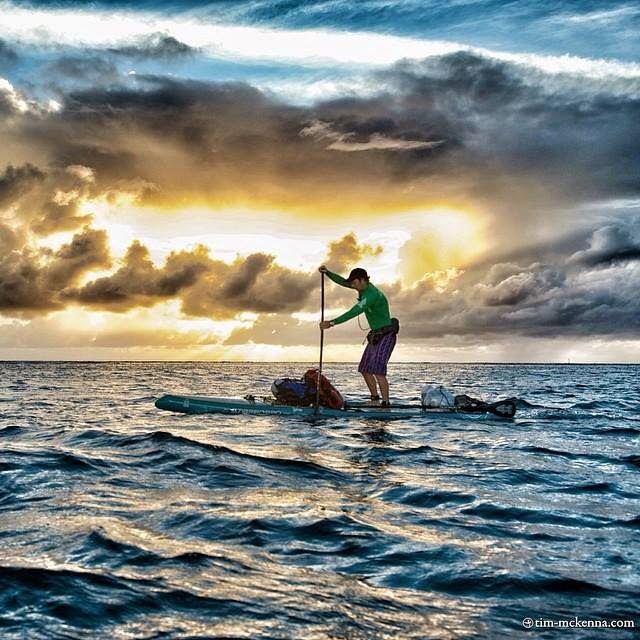Today I had to rearrange flights because my expedition board was not arriving on Maui in time for my flight to Tahiti. With a lot of support from Starboard, board was rerouted to Los Angeles. And found 2 new flights first to LA and then from there to Tahiti. Leaving on Sunday for LA and Monday for Tahiti
The gear for a multiple day crossing is a lot more than you would take on a rail tour, a lot more.
Specially because this crossing is unsupported, I bring a lot of back up and extra gear, like a water maker. I will bring water for at least 5 days although I think I only need 3. Water is the single most important item on board without water you won't survive very long. Although it is a lot of work with a water maker I make drinking water from saltwater. About one liter in one hour of hand pumping.
I have 2 GPS's and a tracker system (INREACH) which sends a signal with my position via satellite so very one can follow me. The Inreach also serves as a emergency beacon in case of a life threatening situation. I also carry and epirb ( personal locator beacon) which I have on me day and night. Below I have picture with all the electronics I bring.
Gear list
GOPRO Camera Hero 3
Small waterproof hand camera, Canon D10
2x GPS, Delorme and Garmin
Epirb, ACR
Tracker Delorme Inreach
Iphone (for 2 way, short message communication via Inreach)
Hand watermaker, Katalyn
Compass
2x Headlamp
Strobe lamp
VHF radio (not in the picture)
Backup battery to charge cameras and iPhone
For the night I have a mattress where I build some side walls on so I don;t get too much waves in my face. I have to blow it up every night and strap it on the board. Many ask me if I use an anchor at night. Most places where I did crossings are between 300 and 4000 meters deep and impossible to anchor. If the wind is not in the right direction I set the sea anchor though, basically a parachute in the water which stops me from drifting to far in the wrong direction. And I use my back up paddle with 2 floaters in the night as small outriggers so the board is a little more stable. At night it does get very cold at sea specially when you are wet. That's why the drysuit with under layers under it will be a big upgrade from the Hawaiian Crossing when I only had a wetsuit and was very cold every night.
Here is the rest of my packing list
Expedition board with front rudder and grab line around the whole board to attached all gear to.
2 paddles
3 leashes (I always wear min. 2 at the same time)
Drysuit very advanced , light weight suit made by SUPSKIN
Sea anchor
Survival blanket a thick one with insulation works as a sleeping bag which can a and does get wet.
Clothing
SUPSKIN DrySuit
2 x underlayer pants, Patagonia
2x thin under layer shirt, Patagonia
2x warmunder layer shirt, Patagonia
1x thin down jacket, Patagonia
1x thin down body, Patagonia
3x warm socks
warm head (night)
sun head (day)
2x surfshorts
2x long arm lycra
Water (for 5 days 25l. +)
packed in several 2 or 4 liter containers
Food (for 5 days)
Heed (Hammer) electrolyte powder
Perpethuem (Hammer), liquid bike food , Powder
Recoverite (Hammer), Protein recover drink for at night, powder
Muesli/oat breakfast with milk powder (just mix in water)
Dry freeze meals (mountain House)
Heat packs ( these packs react with water and warm up my meals)
Sport Bars
Nut and dry fruit mix
chocolate
Medicine package
Strong painkillers
2 x antibiotics
Tape
bandage
Sunscreen and blocker
Repair sack
Dingstick
Epoxy
tools
rope
tape
tie reps
handy knife
Emergency
Flares
life vest
mirror
whistle
sea chart
Sleeping
Inflatable bed
small hand pump
straps
Every thing is packed in zip lock bags in dry bags.
All electronics are in small dry packs with small leashes attached to the grab line.



































